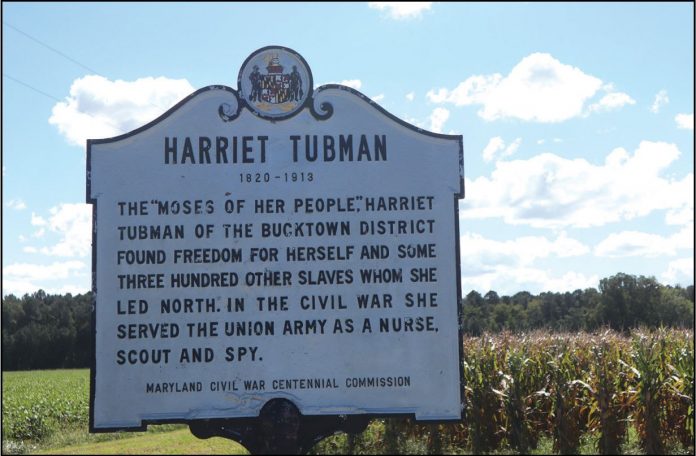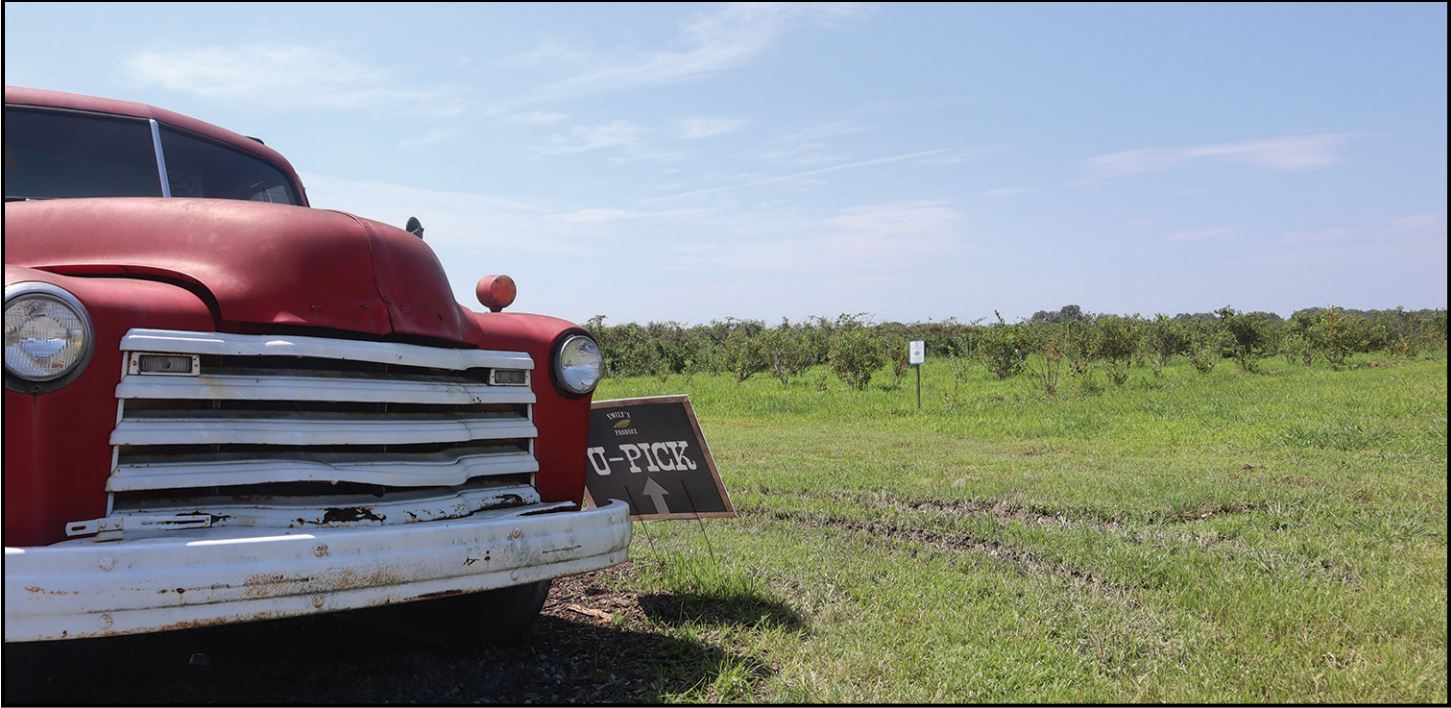
Story and Photos by Matthew Yoder
The transition to remote learning has revealed potential classrooms all around us. Driving north on Route 13, and west on Route 50, just outside Cambridge, Md., one of this country’s great struggles blends seamlessly with unspoiled natural beauty, presenting the opportunity to pair American history with environmental science.
As the drive transitions from busy highway to Route 335, George Jones and Hank Williams Sr. fill the airwaves of a throwback radio station. The scene quickly takes on a pastoral note, with vast views of farmland contrasting scenes of the migratory breeding grounds of waterfowl.
Route 335 links significant landmarks of the life of Harriet Tubman with the Blackwater National Wildlife Refuge and is a drive worthy of the time of any history buff or true appreciator of nature.
Called the “Moses of her People,” Tubman was rumored to have been born in the area near Bucktown Village, on Brodess Farm. A historical marker notes the spot where Tubman spent her early days and is one of more than 30 sites interpreting the life and contributions of the storied abolitionist.
An impressive visitor center is currently closed to the public, but anyone looking to follow the path of the one-time slave, who fought bravely for her freedom, can access the self-guided tour with audio accompaniment at www.harriettubmanbyway.org
Sites include museums and memorial gardens, but with access currently limited in those spaces, the focus of the tour turns to physical landmarks that bring history alive to an emotional experience. Wharfs that were portals to the slave trade and churches that opened their doors to the spirit of a changing nation are accessible
by vehicle, as is the Bucktown Village Store, the site of Tubman’s first act of defiance. It was here that Tubman refused an overseer’s request to restrain a fellow slave who was shopping in the store without an owner’s permission. As a struggle ensued, Tubman was struck in the head with a heavy iron weight. Her skull was cracked and she narrowly escaped death. Tubman’s recollection of the incident is documented and a reminder of the most difficult aspects of history.
“My hair had never been combed and it stood out like a bushel basket, I expect that that hair saved my life.”
Upon returning to her house, with no bed, she was given but two days for recovery and forced to work again.
“I worked with the blood and sweat rolling down my face.”
The sites here are silent and still. There are visitors who sit contemplatively, gazing out upon fields and structures with uninterrupted reflection.
Tubman’s prolific determination ultimately ignited a movement, spanning a number of states by way of the Underground Railroad. Her own direct, personal efforts resulted in the freedom of more than 300 others like herself. She later became a nurse, scout, and spy for the Union Army during the Civil War.

The Blackwater Wildlife Refuge is another story of movement. The area encompasses 30,000 acres of tidal marsh and mixed hardwood and loblolly pine forests. The area’s designation is marked by its importance as a resting and feeding grounds for migrating, as well as wintering, waterfowl. As we approach fall and winter, the area begins to teem with Canada and snow geese, tundra swans, and nearly 20 breeds of ducks using the Atlantic flyway. The refuge also supports a significant population of nesting bald eagles.
The area was at one time managed as a fur farm, primarily for muskrat hides, with the U.S. Fish and Wildlife Service wresting control in 1933.

While visitor centers here, too, are closed, the recreational opportunities seem only hindered by one’s own imagination. There are many hiking trails, a scenic drive, and several spots to embark on a kayak tour. Seasonal outfitters can supply the needs of those looking to experience the waters in such a manner. The roads are not heavily traveled and are open to bikes safely. The skies are vast, offering spectacular photographic opportunities, and it’s not uncommon to spot osprey and eagle vying for fish resources in the marshlands.
Trail maps are available at a number of waysides, as are checklists for interested birders.
The road that leads to both destinations offers the opportunity to load up for a picnic leading in, or stock up on fresh produce and pastured beef, headed home.
Emily’s Produce is an open-air farm market stand located at 2214 Church Creek Road in Cambridge. The Jacksons are seventh generation farmers, and their daughter, Emily, is the namesake of the thriving operation.
Paul and Kelly Jackson wanted their daughter to grow up and keep a solid family tradition alive, one that demands hard work and respect for tradition. Thus, the market was constructed and flourishes with the Jacksons and their employees greeting patrons.

The stand is clean and impressive in variety, highlighting seasonal, fruits and vegetables, and pastured beef direct from the farm. They also carry local pork and seafood. The list of prepared foods and baked items use ingredients from the farm, and the Jacksons do their part to highlight other local businesses, such as ice creams produced by Scottish Highland Creamery in Oxford, Md. If the kids have received their fill of coursework earlier in the trip, they can indulge in the playground or sunflower and corn mazes that fill the summer and fall months.
The farm also supports a vibrant pick-your-own operation, spanning both fruits and flower arrangements. Tangible experiences, such as offered by Emily’s, can cap a day of family learning and communion. Go to www.emilysproduce.com to learn more about the history of the farm and rotating events.
Start early and make time for all three locations. The diversity of experience in a relatively small area of travel will make for a fulfilling day.


